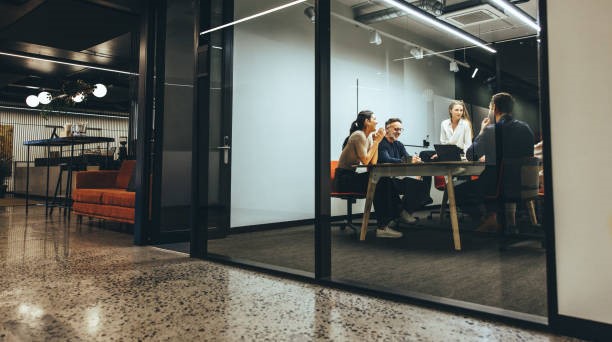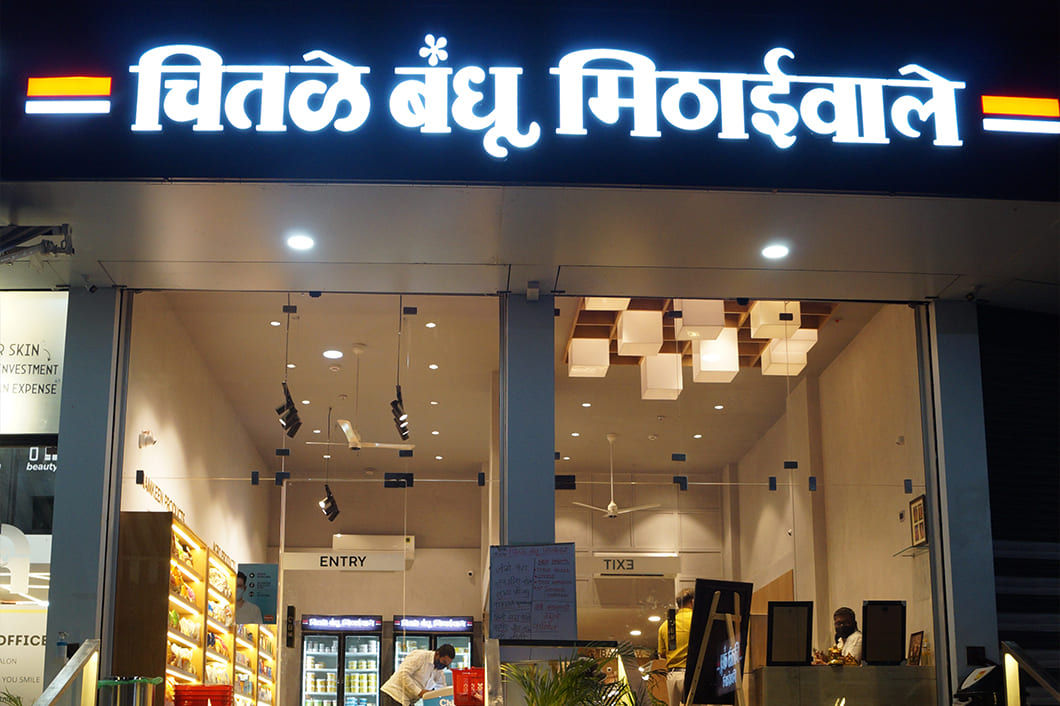Office interior strategies will undoubtedly play a very important role in the Office design for company culture within the modern and fast-moving business landscape. It’s the nature of a work environment that has something to do with directly touching base with employee morale productivity, and overall company values.
The successful design of an office not only communicates the ethos of an organization but also provides impetus for engagement, collaboration, and creativity among employees. At Oglinginches, the best Commercial interior designers in Pune will explore key strategies in office interiors that will help create an innovative workplace or a workplace of inclusion to improve corporate culture and offer you a Successful office design.
From spatial planning to the choice of materials, each element is crucial to the final result. Interior designers work not only to make a space functional and beautiful but also to ensure that it is safe, accessible and sustainable.
Below is a list of all the disciplines and areas that office interior design encompasses:
1. Cultural Alignment through Spatial Design
Designing with a Purpose
From the brand colors down to the office stationery, each aspect of office interior design should be aimed at achieving the mission and vision of the company. Office interior strategies and layout decisions can communicate a company’s culture and brand identity. For example, an open-plan office might help nurture a culture of transparency and teamwork.
Peaceful zones could be provided for people who prefer to work without distractions. A great focus on a purpose-driven mindset is in place when commercial interior designers in Pune design office space. These are designed to implement the values a corporation stands for and allow the members to engage with the space around them meaningfully.
Thematic Zones
Thematic zones in establishing different working styles create belonging. Leave room for collaboration, social interaction, focused work, and downtime. Every zone should add its special touch to the company culture. For example, a bright communal area may inspire camaraderie, while quiet meditation or reflection rooms can inspire clarity of mind. Incorporating these various environments into an office makes design dynamic and versatile for a company’s culture.
2. Employee Empowerment through Personalization
Your Workspace
Personalization empowers employees and instills a sense of ownership within the work environment. For instance, a modern, customized workspace offers adjustable desks and allows employees to personalize their spaces with their décor, empowering them to be more productive and satisfied with their jobs. Employees who feel comfortable and represented in their workspaces excel in their jobs, which makes office interior strategies that focus on personalization integral to well-designed offices.
Employee-Led Design Input
Design input from employees elevates the experience. Conduct surveys or workshops on space layouts and office amenities to garner ideas. When these suggestions go into effect, it makes employees feel valued because community and a feeling of belonging are created. This approach will sustain company culture by furthering the employee-employer relationship and making sure the workspace resonates with those occupying it.
Must Read: Energy-efficient offices help you save the earth and your pocketbook
3. Encouraging Inclusion and Diversity
Design for Everyone
A successful office design incorporates elements that address a variety of needs, physical abilities, and preferences. Accessible entrances, gender-neutral restrooms, and adjustable furniture make quite a difference in the way everybody feels welcome. By paying active heed to the needs of all, companies make one clear message: every employee matters. This upgrades not only workplace satisfaction but also a culture of respect and acceptance.
Celebrating Cultural Diversity
This will help boost inclusion and employee morale through framed art representative of each culture, color schemes symbolic of diverse backgrounds, or even global themes in meeting room areas. Celebrating cultural diversity in your workspace helps to build great company culture, understanding, and respect from a collaborative employee base coming from different backgrounds.
4. Adaptable and Flexible Spaces to Meet Dynamic Culture
Modular Furniture Systems
Flexibility is the keyword nowadays in ever-changing work environments. Companies have space adaptation at a fast pace with the help of the modular furniture system. Movable desks, partition walls, and lightweight seating enable the re-arrangement of space for meetings, collaboration projects, and solo working. This flexibility in office interior design will ensure that the employees are provided with an environment that caters to their present tasks and increases their overall productivity.
Multi-Functional Spaces
The functionality of space use while handling multiple activities is maximized with multi-functional spaces. Take this conference room, for example, which may double up as a breakout informal area where teams can collaborate whenever there are less formal meetings. As companies invest more in adaptable space, a culture of creativity and innovation can be encouraged where employees can be seen interacting with each other and ideating across various environments.
5. Health and Well-being as a Cultural Pillar
Biophilic Design for Mental Health
Biophilic design can go a long way in uplifting office culture. Green walls, natural light, and indoor plants clean the air and boost morale among employees. There is indeed research proving the correlation between nature and mental health, hence making biophilic design very important in office interior design. By putting well-being at the forefront, companies send the message that they value creating a healthy atmosphere to work in.
Active Design
The active design will, in turn, encourage activity within the workplace. Standing desks, staircase-oriented floor plans, and even walking routes all make a fine contribution to encouraging workers to be more active within their daily routines. Employers further support such a culture by initiating wellness programs designed around fitness, mindfulness, and healthy lifestyles.
Organizations give due importance to health and well-being with the intent of establishing a caring workplace culture that treats employees as individuals and not mere workers.
Conclusion
At Oglinginches, the best Commercial interior designers in Pune, we understand the importance of designing functional workspaces, and that also reflects the identity and values of each company. With our service off-site offices, we work closely with our clients to create bespoke successful office designs that align with their corporate culture and promote an inspiring and productive work environment.
From the selection of colors and materials to the layout of space and the integration of brand elements, our team of office interior design experts ensures that every detail contributes to conveying the essence of the company and strengthening its corporate culture.
Don’t let your workspace be just a place where tasks are accomplished. Make it an environment that inspires, facilitates collaboration, and is a tangible testament to your corporate culture.
Contact us today through our website. Let’s start together to design the ideal workspace that your company deserves and needs.
Must Read: Digital Transformation: Creating Connected Workforce Office Design




